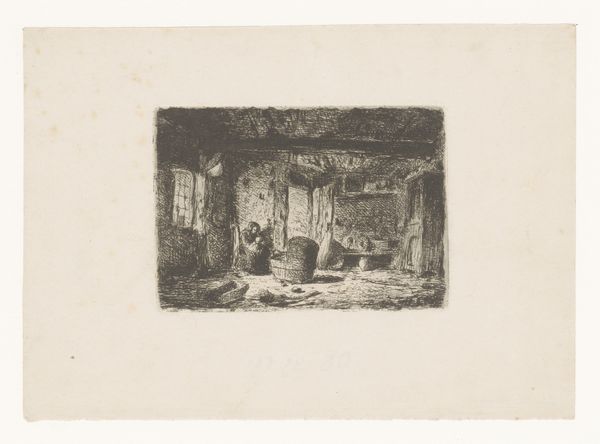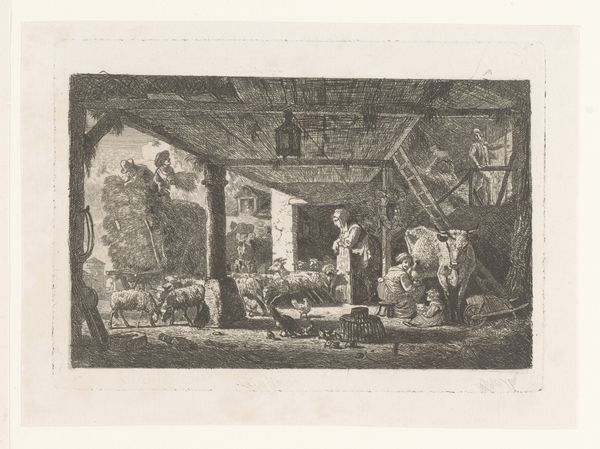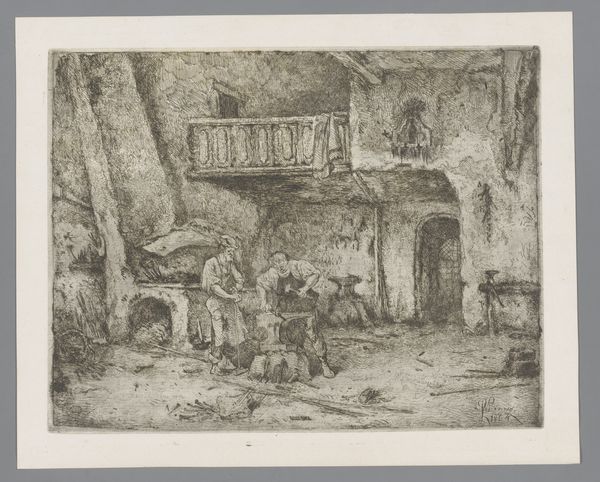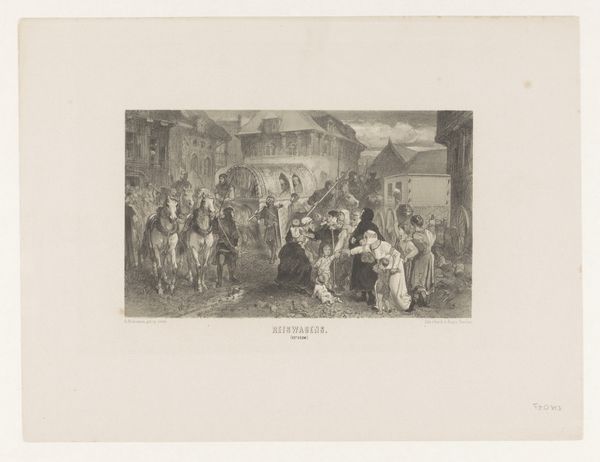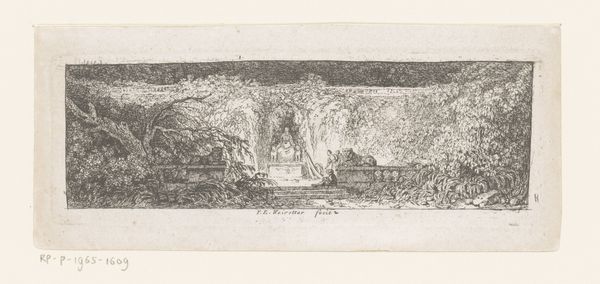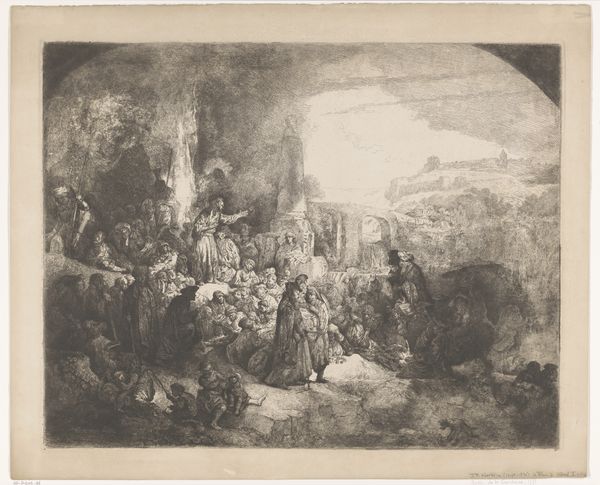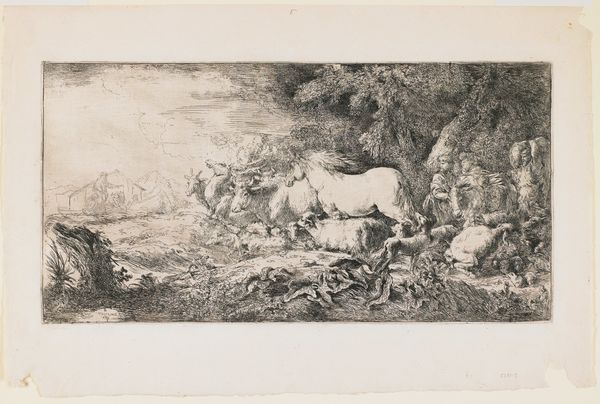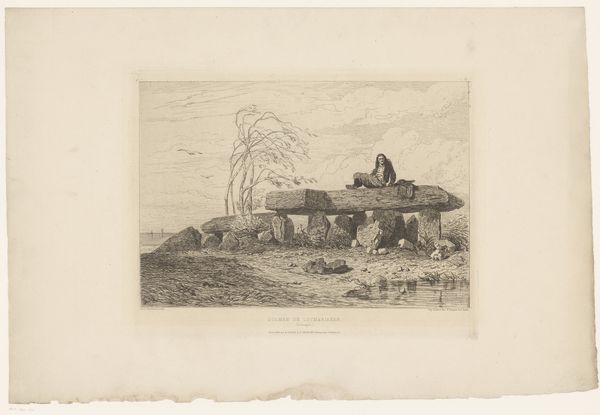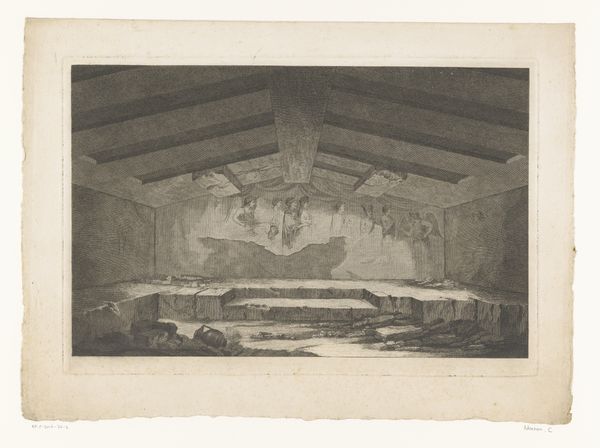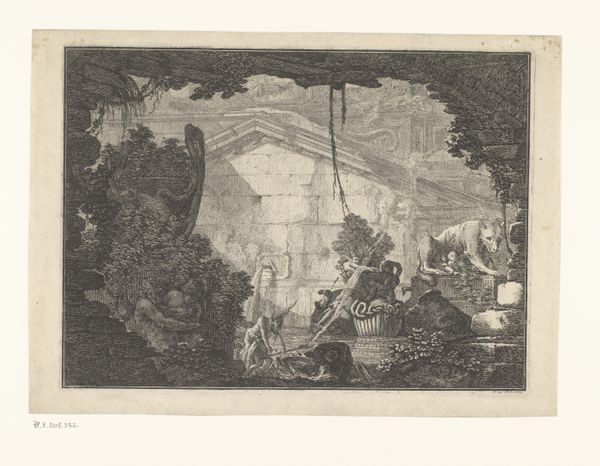
Etruskische grafkamer in Tarquinia versierd met reliëfs c. 1762 - 1770
0:00
0:00
print, engraving, architecture
# print
#
landscape
#
geometric
#
ancient-mediterranean
#
line
#
history-painting
#
engraving
#
architecture
Dimensions: height 317 mm, width 475 mm
Copyright: Rijks Museum: Open Domain
Editor: So this is an engraving from around 1762 to 1770, "Etruskische grafkamer in Tarquinia versierd met reliëfs," or, "Etruscan tomb chamber in Tarquinia decorated with reliefs". It’s currently at the Rijksmuseum. The details are amazing. It seems to be about exploring a specific point in history and I would like to better understand the context in which this artwork was created. How do you interpret this work, particularly regarding its role within the artistic landscape of its time? Curator: It's important to consider how eighteenth-century artists grappled with antiquity. They weren't simply copying the past; they were actively reconstructing it, often through the lens of their own contemporary values and beliefs. How do you think that act of reconstruction might impact our understanding of Etruscan culture today? Editor: That makes a lot of sense. So, do you mean that it can also reflect their current social structures and ideals, instead of what actually existed during that period? Curator: Precisely! It raises crucial questions about representation, cultural appropriation, and the power dynamics inherent in the act of depicting a past civilization. How do we avoid romanticizing or misrepresenting the lives and experiences of the Etruscans through a modern, colonial gaze? Editor: This gives me something to think about when analyzing how artists interpret historical subjects, considering both the source and their own background and social contexts. Thanks! Curator: The intersection of past and present creates endless possibilities for interpretations! We must remember that art from the past and present serves as a reminder of human achievement.
Comments
No comments
Be the first to comment and join the conversation on the ultimate creative platform.
